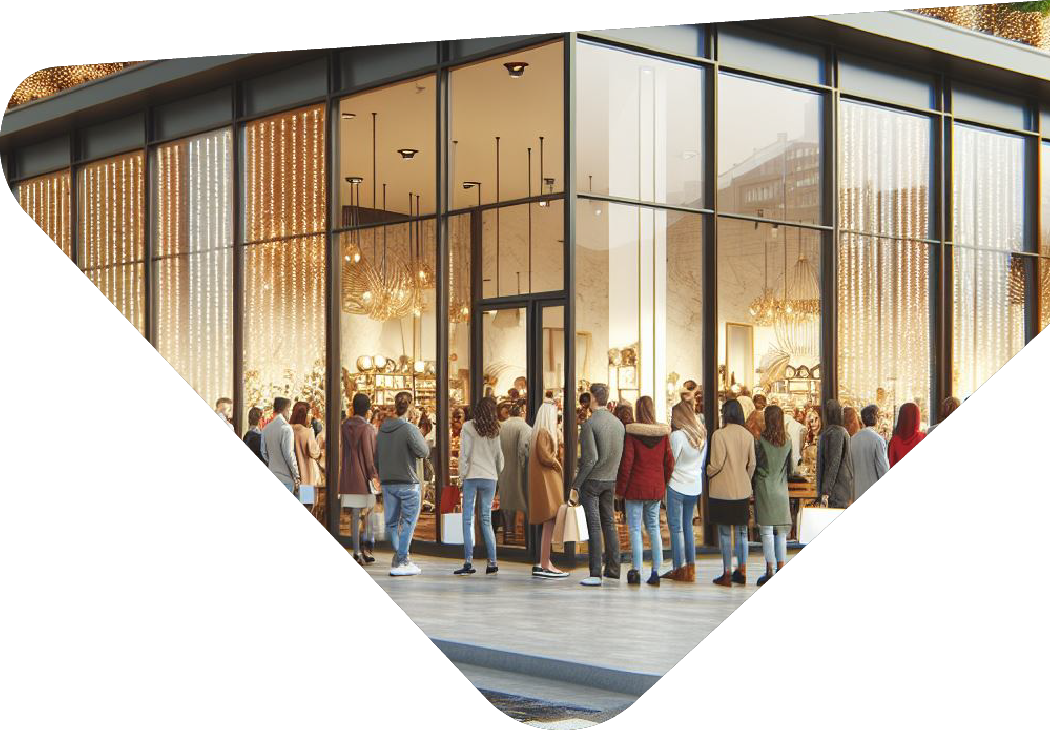Preamble
Business growth in hypercompetitive contexts
In hypercompetitive environments, we have to face the fact that:
-
The added value generated by our business is not enough. It is difficult to generate a sufficient profit margin or even maintain a sufficient income level.
-
Customer loyalty does not withstand critical situations.

Business growth in hypercompetitive contexts
The syncplexity model is about building a prestigious brand.
A brand is prestigious when the level of customer satisfaction is constantly above expectations, and robust emotional bonding is forged.


First step
Decide the ultimate goal
To become and remain a benchmark in our market
The first step proposed by the syncplexity model is to decide the business’s ultimate goal, which should be to become the market reference in its sector.
Why?
If we are just “just one more”, it will be difficult for potential customers to notice us.
Second step
How?
Becoming the
Consumer’s Preference
The second step proposed by the syncplexity model is to decide how the business will become the benchmark in its sector, which should be developing the elements that will enable it to be the customer’s preference.
Hence, syncplexity is about becoming the customer’s preference in hypercompetitive contexts.

How to become the consumer’s preference?
Personal Preferences
=
Affective Phenomena
Affective Dynamics
≠
Rational Sphere
People’s preferences are elements that correspond to the area of affective phenomena, which control human feelings. Consequently, business management must respect the principles of emotion dynamics, which are the opposite of rational ones.
Nevertheless, our entire existence, from the intricate frameworks of our daily lives to the very fabric of our business models, has been relentlessly shackled by the chains of rationality.
By adhering to this limited mindset, we unwittingly relinquish an overwhelming majority of our untapped competitive potential, blissfully ignorant of the colossal opportunities that elude us.
How to become the consumer’s preference?
Personal Preferences
Affective Phenomena
Authenticity
Personal Change is Required!
One of the most common (and serious) mistakes is treating the affective phenomena rationally.
The result is that we work with phrases and concepts that are empty of the differential element of affective-emotional phenomena: personal energy. That generates an inconsistent perception in the receiver (potential consumer,) and the affective-emotional process is annulled.
Let us remember that inconsistency is one of the most potent affective-emotional inhibitors.
For instance, when a severe crisis hits the market, we will accept it as inevitable if the company is to disappear –because many others are also closing down –.
Let’s take the example of the Global Financial Crisis of 2007-2008, which was a devastating storm that ripped the economy, wiping out millions of jobs and businesses. In Spain, where the crisis was compounded by the bursting of the Real Estate Bubble, the end of many companies in the sector was seen as inevitable

As a consequence of this mostly rational vision, which limits the potential available to compete to only a small part of it, we assume as inevitable facts that are not.

Similar situations were experienced during the COVID-19 pandemic, which, among many other negative things, condemned thousands of retail businesses to disappear.
In any of these or similarly challenging scenarios, the syncplexity model has proven its ability to help companies make the transformation they need to be competitive.
As a matter of fact, facing these kinds of predicaments has shaped the most essential aspects of the syncplexity model and its methodology –the Expansive Emotional Management—.
Going back to the initial thread (deciding the ultimate goal and how to achieve it,) many businesses don't even consider that they may be the customer’s preference in their industry.
There is a widespread belief that in order to prosper and grow, it takes a lot of resources. Consequently, those businesses that do not have them do not even consider that they can become the benchmark.
And that is a huge mistake!

With more than 20 years of experience, with several cases of success in facing the most severe crises in different countries and industries, there is no doubt that an alternative to the common models is possible.
Therefore, giving a more specific answer to the former question (“How to become the customer’s preference?”), the syncplexity model is supported by a comprehensive methodology, the Expansive Emotional Management, which is structured around the following essential principles:
Fullness
Enduring competitiveness lies in personal growth through positive behaviorism. Every person must be able to develop their full potential. To this effect, people must be able to make a perfect fit between what they do, want, and are so that they can develop their full potential.
Substantiveness
One of the pillars of business resilience is the knowledge of consumers’ genuine desires and their effective transformation into unique and appreciated features: superior added value.
Consistency
The emotional bonding required to survive hypercompetition can only grow in an environment of congruity, where all parts of the business fit together naturally. A comprehensive approach is requisite.